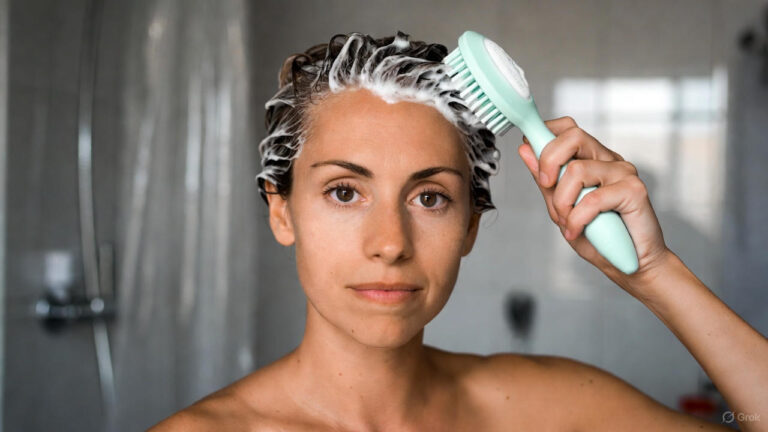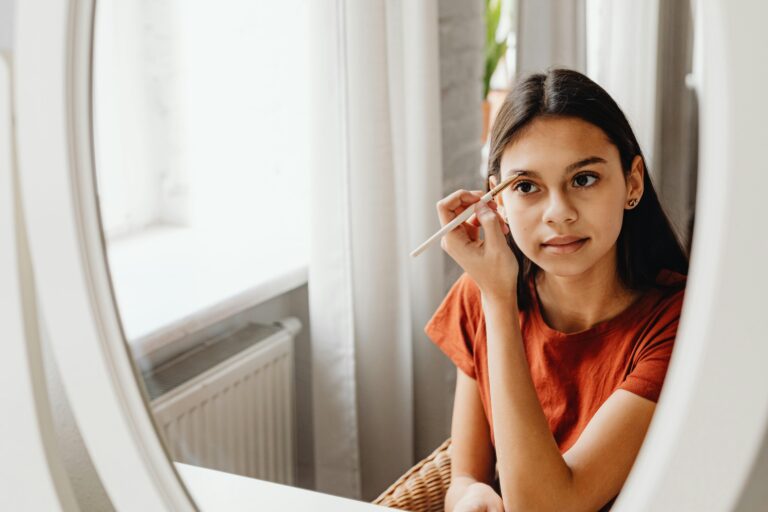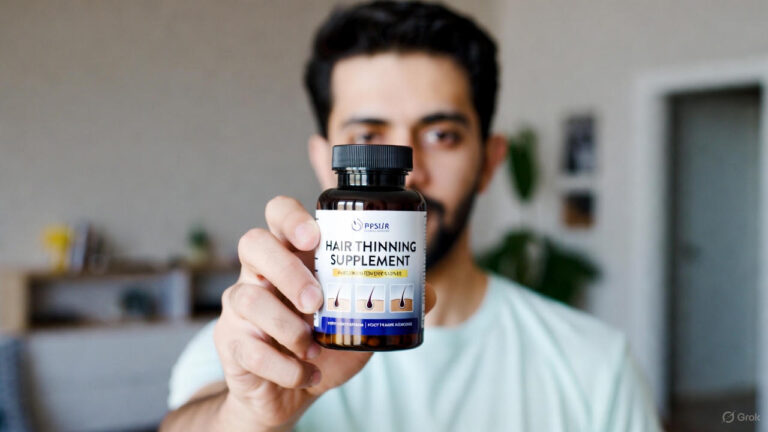Ever wondered how beauty is portrayed in the media and how that affects what we see in the mirror? From glossy magazines to TikTok filters, the way beauty shows up on screens has shaped our ideals, sometimes without us even noticing. Media has the power to create trends, challenge norms, plus set impossible standards. Understanding this story helps you see where those ideas came from and why they still matter.
The Early Days: Print Media and Silent Films
When print magazines took off in the late 1800s, they offered the first mass-produced images of beauty. Women’s magazines featured delicate skin, narrow waists, and carefully styled hair. Silent films added movement, showing stars like Clara Bow with short bobs and expressive eyes. You might laugh now, but those looks drove makeup sales through the roof.
Beauty then wasn’t about diversity. It leaned toward Eurocentric features and soft femininity. The idea was to look polished, not natural. Photographers often edited prints to smooth imperfections long before Photoshop existed. Even then, the media was shaping beauty ideals, one retouched image at a time.
The Golden Age of Hollywood
Hollywood from the 1930s through the 1950s turned actresses into global icons. Think Marilyn Monroe’s red lips or Audrey Hepburn’s graceful brows. Studios tightly controlled how stars appeared. Wardrobe departments, makeup teams, plus lighting experts worked together to craft perfect on-screen images.
This era linked glamour with stardom. The message: if you wanted to be admired, you had to match the look of the stars. It set a mold—curvy yet slim, elegant but approachable. Men also felt pressure, with clean-shaven chins and broad shoulders ruling the day.
Case studies show how studios enforced “marketable” looks, sometimes changing actors’ names, hairlines, or even noses. It wasn’t just entertainment. It was mass marketing of a specific beauty formula, repeated in magazines, billboards, and later, television.
The Age of Television and Mass Marketing
When TVs landed in living rooms during the 1950s and 60s, beauty advertising exploded. Soap companies ran commercials showing women with glowing skin. Diet ads promised quick fixes. Suddenly, what looked beautiful wasn’t just on movie screens but in every home.
This period also created product loyalty. If a TV star used a certain brand, audiences trusted it. Beauty standards shifted slightly—healthier, sportier looks grew popular—but stayed narrow. Representation still focused on slim, young, mostly white faces. Other groups rarely saw themselves reflected.
The Supermodel Era
The 1980s and 90s introduced supermodels who turned beauty into global celebrity. Naomi Campbell, Cindy Crawford, plus Kate Moss set trends overnight. The media spotlight made high cheekbones and runway-ready bodies the aspiration. Fashion magazines filled coffee tables and bedrooms with a singular vision of what was beautiful.
Yet this era also introduced tension. The “heroin chic” look pushed thinness to extremes. Critics pointed out harmful effects on self-esteem, eating habits, and mental health. Documentaries and interviews with models later exposed how controlling and punishing the industry could be.
At the same time, MTV and music videos brought bolder makeup, cultural fusions, and street style into the mix. Suddenly, beauty had an edge. What you saw on screen shaped what you wore to school the next day.
The Internet Changes Everything
The late 1990s and early 2000s brought beauty online. Forums, early YouTube tutorials, plus digital ads opened space for more voices. You could learn to contour like a pro from someone across the world. Beauty blogs challenged magazines, showing real people with relatable advice.
But digital editing grew sharper. Airbrushing turned into Photoshop, then filters. Some photos looked so perfect they seemed alien. Social media created cycles of trends so fast you barely kept up. Remember when “duck lips” selfies ruled Instagram? That wasn’t random. It was a media feedback loop of influencers and algorithms.
Social Media and the Era of Influence
Today, platforms like TikTok, Instagram, plus YouTube control how beauty is portrayed in the media. One viral video can launch a product or define a look overnight. Micro-influencers feel more authentic, but they still filter, edit, or partner with brands.
The good news: diversity is growing. Campaigns now feature models of different sizes, genders, ages, and ethnicities. Major brands collaborate with influencers who break stereotypes. Yet pressure remains. Digital beauty often feels achievable yet somehow always out of reach.
Case studies like Fenty Beauty show how inclusive marketing reshaped expectations. By offering foundation shades for nearly every skin tone, Rihanna’s brand challenged old industry habits. Consumers responded with loyalty and applause.
How Media Shapes Self-Image
Repeated exposure matters. When you constantly see a narrow version of beauty, you may compare yourself without realizing it. Studies link this with lower self-esteem, body dissatisfaction, and even depression.
You also learn beauty behaviors from media. Maybe you started filling in brows because tutorials made it look easy. Or perhaps you stopped because the trend shifted. Media creates social proof: if enough people see a style, it becomes normal, even if it’s tough or expensive to maintain.
Experts now study how these cycles affect mental health. Some push for “digital literacy,” teaching young people to question what they see. Others call for stricter labeling of edited images. Countries like Norway already require influencers to disclose retouched posts.
Cultural Differences in Media Beauty
Beauty ideals aren’t the same everywhere. Korean media popularized glassy skin and gradient lips. Western ads favored tanned bodies and contouring. Bollywood promoted thick hair and dramatic eyes.
Global platforms now blend these styles. A K-pop star might wear Western streetwear while an American influencer tries Korean skincare. Media no longer exports beauty one way. It cross-pollinates it.
This mix offers both freedom and confusion. You can choose looks from anywhere. But you might also feel pressure to keep up with multiple trends at once. It’s a buffet of styles, but not all are served equally.
Responsibility and Change
Media companies now face growing scrutiny. Audiences demand authenticity. Brands that retouch too much risk backlash. Shows that cast only one “type” of beauty spark criticism.
Initiatives like Dove’s Real Beauty campaign show the shift. They use unretouched photos and feature people of different shapes and ages. Some magazines pledge to stop editing bodies. Streaming platforms greenlight shows with broader representation.
Still, profit often beats principle. The cycle of creating desire drives sales. As long as consumers chase trends, media will produce them. That tension keeps the conversation alive.
Conclusion
How beauty is portrayed in the media tells a story of power, culture, and change. It influences what you admire, desire, plus even fear about your appearance. Understanding that story helps you step back and decide what truly matters for you.
Frequently Asked Questions
1. Why does media influence beauty standards so strongly?
Media reaches huge audiences, repeating specific looks until they feel normal. When you see one ideal often, it starts to shape what you think is attractive.
Yes, in many cases. Platforms allow more voices to share their style and culture. Brands now recognize that representation sells and feels fairer.
3. How can I protect my self-esteem from harmful beauty portrayals?
Follow diverse accounts, remind yourself of editing tools, plus take breaks from platforms. Talking openly with friends or professionals can also help.
4. Are laws changing how influencers show beauty?
Some countries now require labeling of retouched images. Norway, for example, enforces disclosure rules on influencers and advertisers.
5. Will media ever stop creating unrealistic beauty ideals?
Probably not fully. Media thrives on novelty and aspiration. But pressure from audiences keeps pushing toward more honest, inclusive portrayals.
Curious about your own feed? Next time you scroll, notice who and what shows up. You might see patterns you never spotted before.



